|
Chrysler Kokomo Transmission Plant During World War Two
Kokomo, IN
1937- Current
This page updated 4-5-2023.
With the 1925 demise of the Haynes
Automobile Company in Kokomo, IN, its former plant on Home Avenue lay
dormant. In 1937, Chrysler purchased the plant and began
manufacturing transmissions for its vehicles. Chrysler occupied
the former Haynes factory until it built a new transmission plant in
1955, on a 154 acre site a mile southeast of the Haynes facility.
Chrysler then utilized the former Haynes factory as an aluminum die
casting plant. Chrysler is still a major employer within the Kokomo
area.
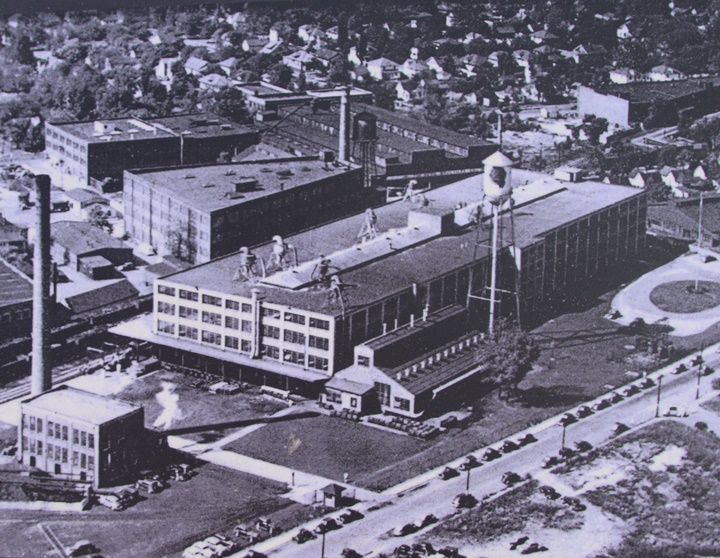
This view of the Chrysler manual
transmission plant on Home Avenue is looking northwest. Home
Avenue is in the foreground.
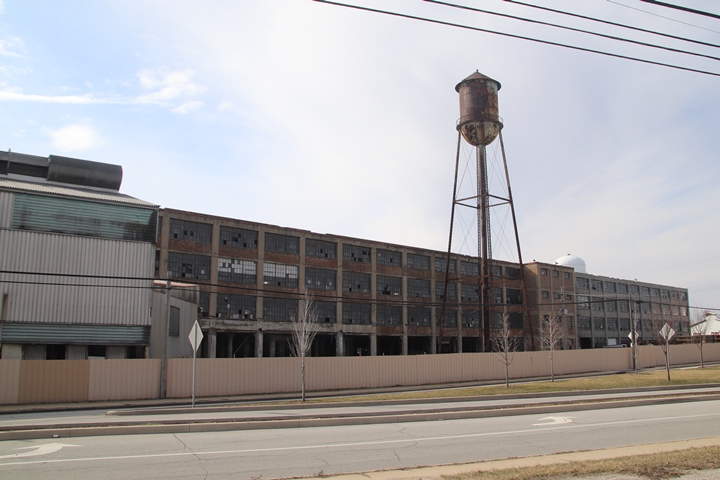
As of March 2023, the plant which housed the
former Haynes Automobile Company and later Chrysler transmission
operation stands empty.
The last known occupant was an automotive recycling company. While
looking a little ragged due to lack of attention, this 100 year old plant still
stands proud. This is one of several plants in Kokomo, IN that
helped win World War Two. Author's photo.
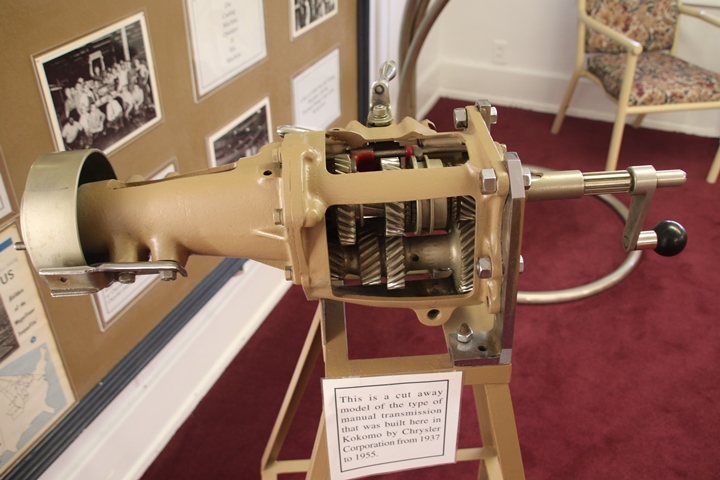
Between 1937 and 1955, the Chrysler Home
Avenue plant produced 5,124,211 manual transmissions, just like this one
on display at the Elwood Haynes Museum in Kokomo, IN. Author's
photo.
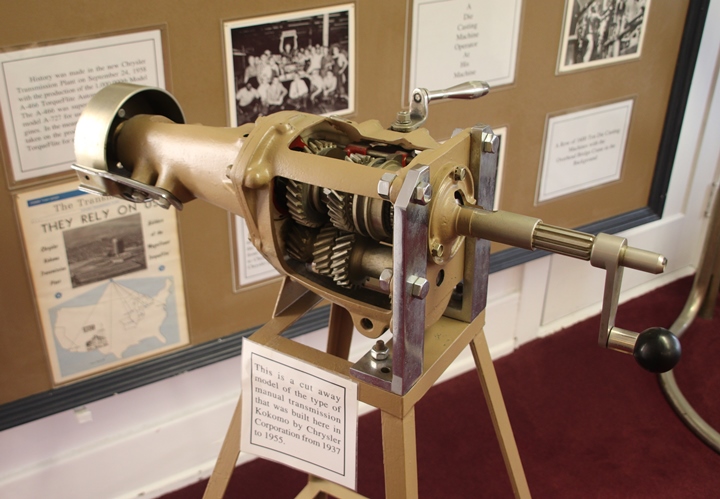
The display is set up so visitors can turn
the crank and watch the gears as they mesh inside the transmission.
Author's photo.
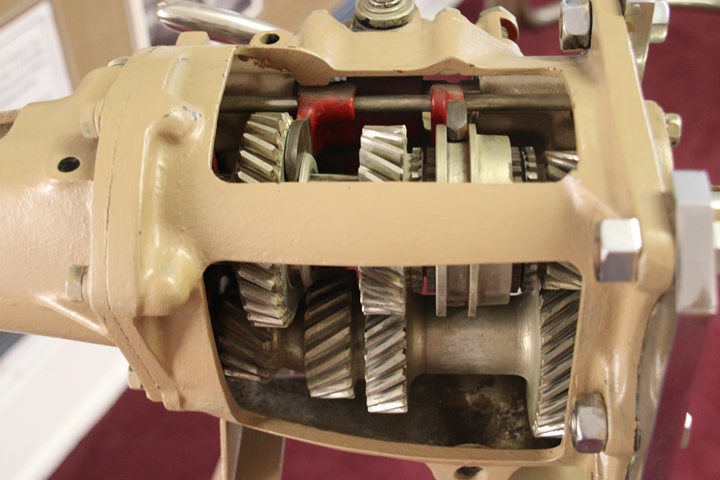
This image shows the Kokomo plant had the
capability to make and cut gears. This capability was put to use
during World War Two. Author's photo.
Chrysler Kokomo Plant World War Two
Products: Information is limited on how the Chrysler Kokomo
plant helped win
World War Two. An informational placard at the Elwood
Haynes Museum notes that the plant made "parts for tanks and Bofors
guns." The "War Industrial Facilities: Authorized July 1940
- August 1945" published by the Civilian Production Administration on
July 30, 1946, shows that the plant made "Gear Boxes." Gear box is
another term for transmission. Therefore, the tank parts the
Kokomo plant made were, most likely, gears and transmissions for the M3
Grant/Lee and M4 Sherman series medium tanks that Chrysler built in
Warren, MI. Army Ordnance provided $247,000 in capital funding for
the Kokomo plant for tooling to make the gear boxes.
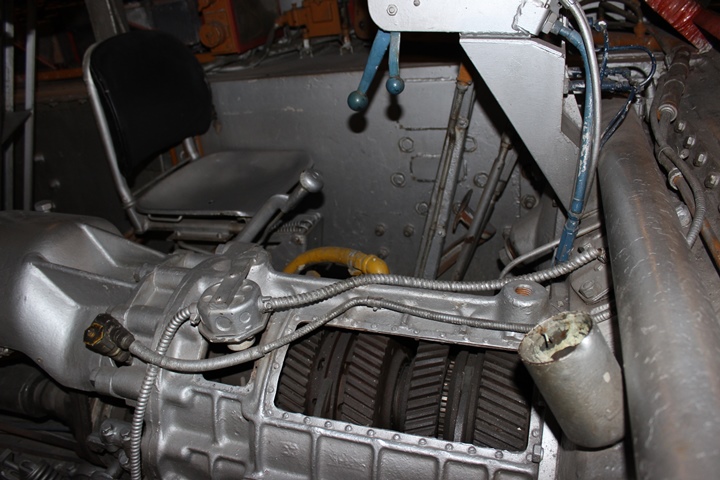
This is a transmission from an M4A2 Sherman
tank display at the Canadian War Museum in Ottawa, Ontario, Canada.
This is very similar in construction to the civilian manual
transmissions made by the Kokomo plant. Conversion of the plant
to make and assemble the gears into a tank transmission would have
been rather straight forward. The driver's seat can be seen in the
background. Author's photo.
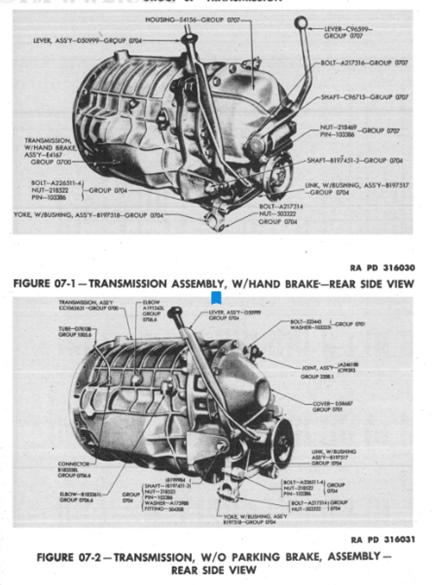
This and the next four images provide
detailed information on a typical Sherman tank transmission. There
were a lot of parts that went into the construction of this transmission
for the Chrysler Kokomo plant to have made for the war effort.
Image added 4-5-2023.
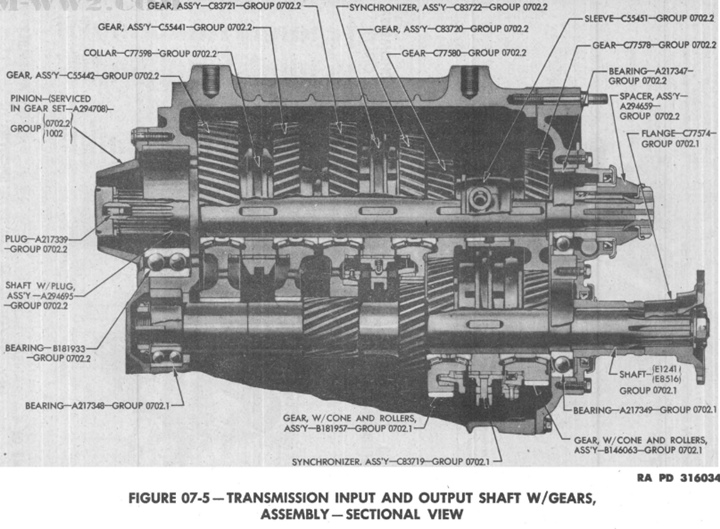
Image added 4-5-2023.
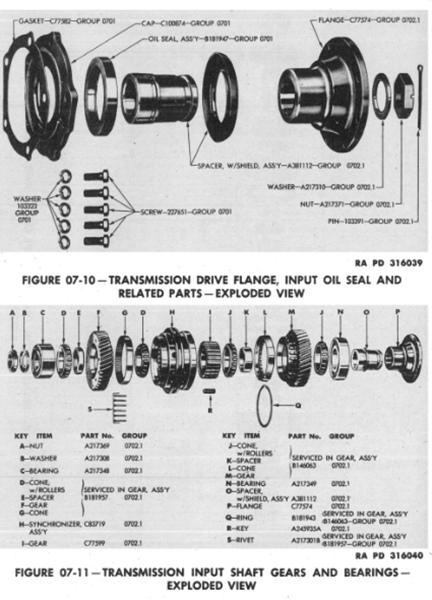
This and the next image show two of the
several different subassemblies in the transmission. Image added
4-5-2023.
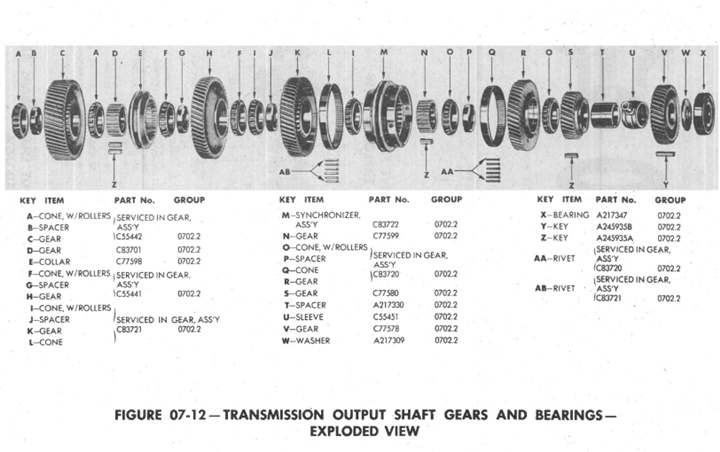
Image added 4-5-2023.
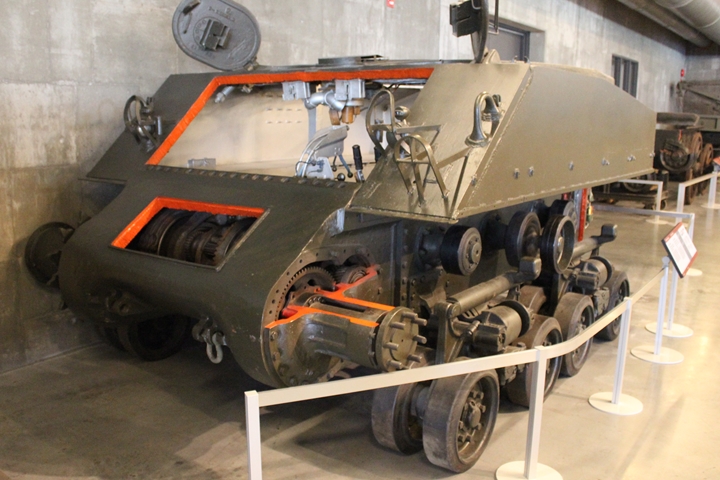
The transmission shown above is in this
cut-away of a Fisher Body-built M4A2 Sherman tank. Several
different companies built Sherman tanks powered by different engines,
but items like the transmission were standardized
for ease of production. Author's photo.
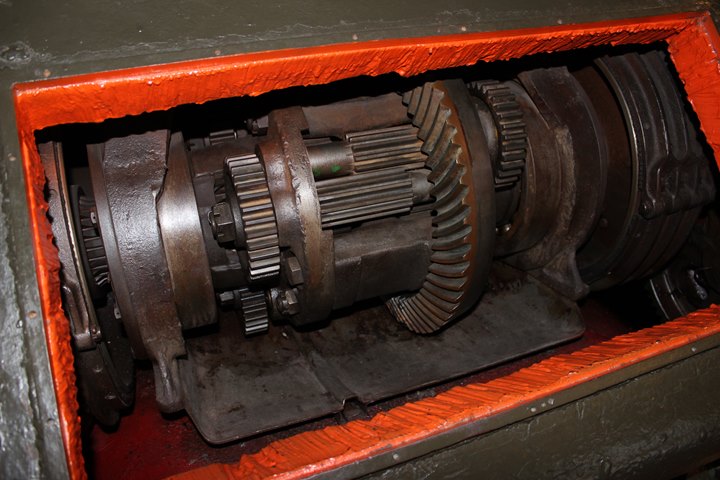
This is the differential on the Sherman
tank. The transmission mounted inside the tank connects directly
to the differential on the front of the tank. The Kokomo plant
could also have been making many of the gears for this assembly.
Author's photo.
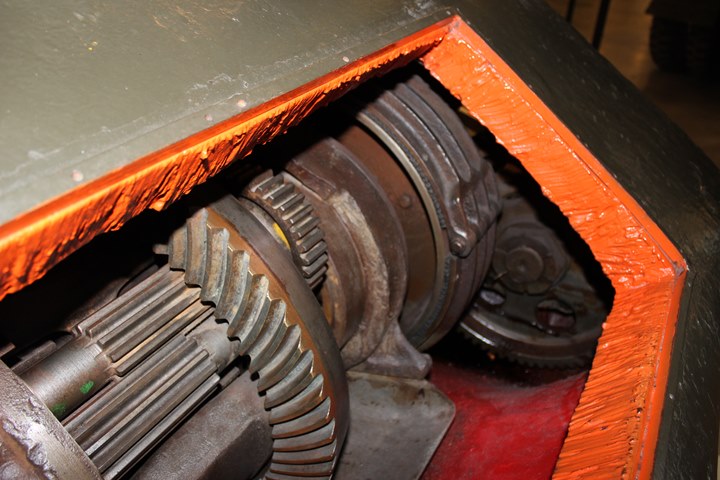
Author's photo.
The M4 Sherman tank was
not the first tanks built by Chrysler in Warren, MI. The M3
Grant/Lee tank began production in July 1941. Table 1
shows the monthly production of the M3 series tanks and how many
transmissions per month Kokomo provided. The M3 and M4 tanks
used the same transmissions.
|
Table 1 - Chrysler M3 and M3A4 World War Two Production |
| |
Jul
41 |
Aug
41 |
Sep
41 |
Oct
41 |
Nov
41 |
Dec
41 |
Jan
42 |
Feb
42 |
Mar
42 |
Apr
42 |
May
42 |
Jun
42 |
Jul
42 |
Aug
42 |
Totals |
| M3 |
7 |
50 |
95 |
148 |
194 |
235 |
300 |
300 |
366 |
381 |
400 |
424 |
317 |
28 |
3,243 |
|
M3A4 |
|
|
|
|
|
|
|
|
|
|
|
33 |
73 |
3 |
109 |
|
Totals |
7 |
50 |
95 |
148 |
194 |
235 |
300 |
300 |
366 |
381 |
400 |
457 |
390 |
31 |
3,352 |
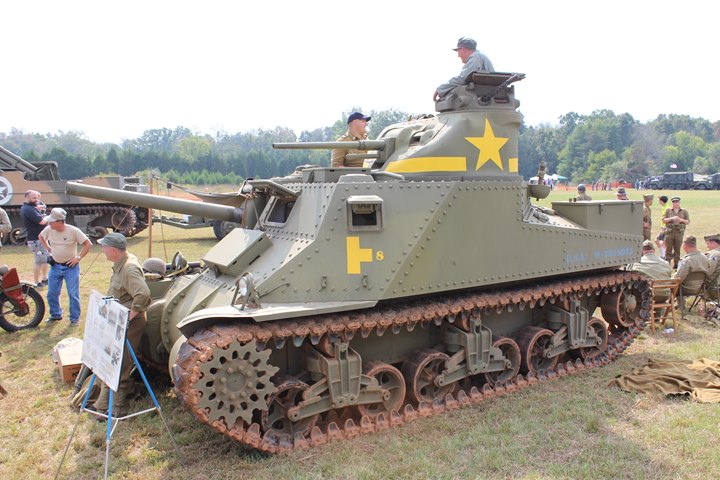
This M3 tank was built in July 1942.
Author's photo.
|
Warren, MI
Chrysler
Tank Arsenal
Production during World War Two |
| Type |
Number built |
Dates |
Engines |
| M4A4
(75) Sherman |
7,499 |
7-1942 to 9-1943 |
Chrysler multi bank.
See M4A4 and engine photos below. |
| M4A6
(75) Sherman |
75
|
10-1943 to
3-1944 |
Caterpillar
diesel radial |
| M4(105) Sherman |
1,641 |
2-1944 to
3-1945 |
Continental
built Wright R975 radial aircraft |
| M4A3(105)
Sherman |
3,039 |
5-1944 to 6-1945 |
Ford GAA V8 |
| M4A3(76) |
4,017 |
3-1944 to 4-1945 |
Ford GAA V8 |
| M4 Composite Sherman
(75) |
1,676 |
8-1943 to 1-1944 |
Continental
built Wright R975 radial aircraft |
| Total M4 Series
|
17,947 |
|
|
Different versions of Sherman tanks not only
had different engines, but the main gun armament was also different on
them. Main gun armament included 75mm and 76mm guns and 105mm
howitzers.
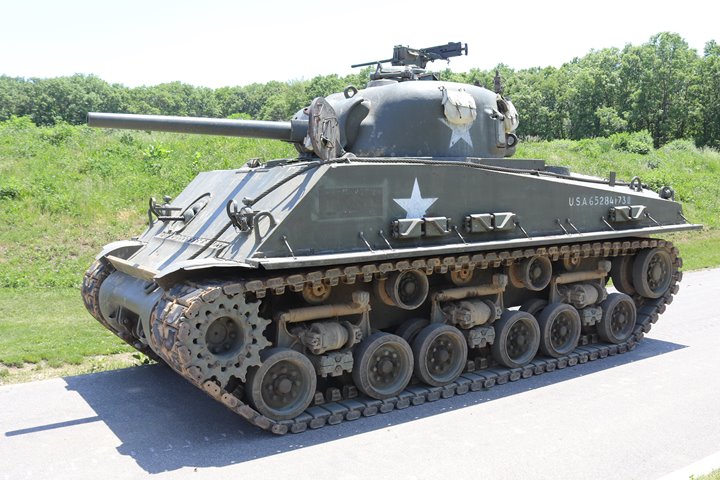
This 4A3E8 is armed with a 75mm cannon.
Author's photo.
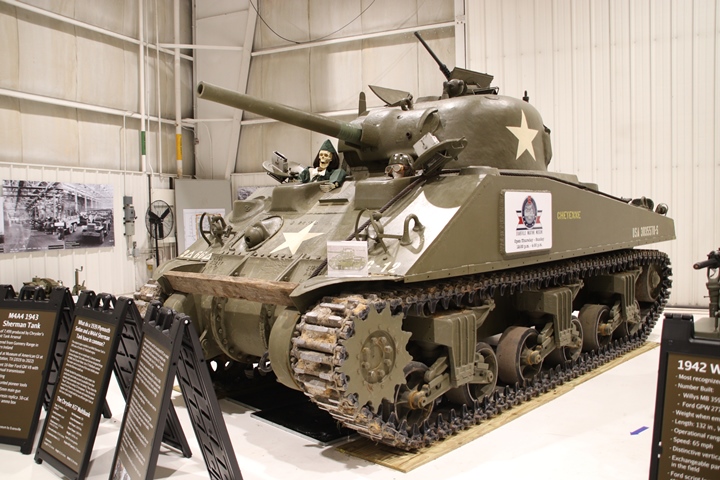
This 4A4E8 is armed with a 75mm cannon.
Author's photo.
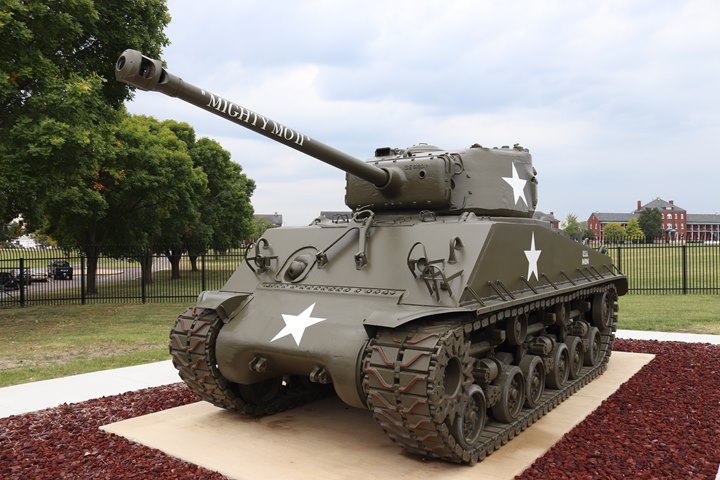
This 4A3E8 is armed with a 76mm cannon. Author's photo.
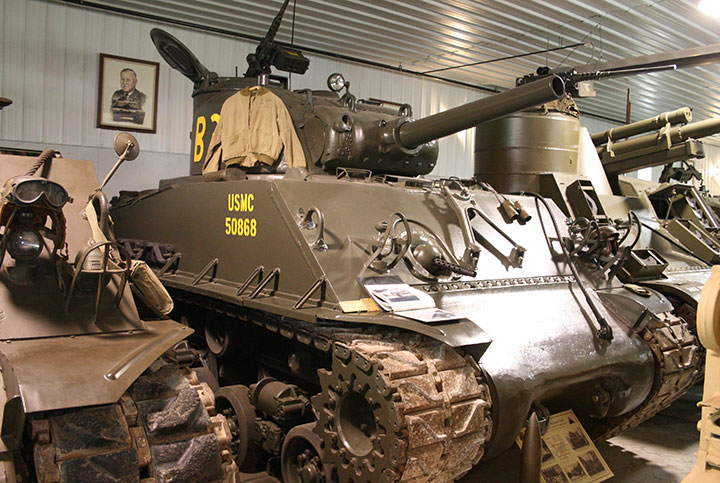
This 4A3E8 is armed with a 105mm
howitzer. Author's photo.
40mm Bofors Anti-Aircraft Gun Parts:
It is unknown which 40mm Bofors gun components were produced at the
Kokomo plant for the. Kokomo was one of twelve Chrysler plants that made
parts for final assembly at the Plymouth plant in Detroit, MI. The
Plymouth plant produced 14,442 pairs of Bofors guns for the U.S. Navy
and 30,095 single Bofors guns for the U.S. Army.
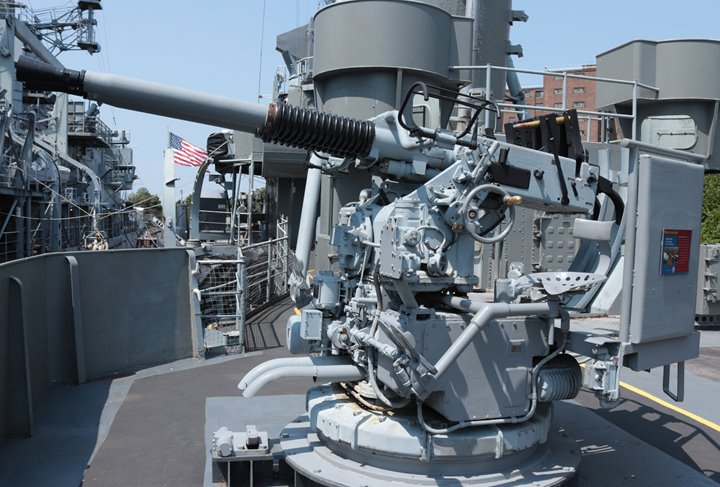
Chrysler built 14,442 Dual 40mm water cooled Bofors Guns for the US Navy
under license from the Bofors Company of Sweden during World War Two. After
Chrysler engineers set up the manufacturing and assembly based on mass
production techniques, the weapon could be assembled in ten
hours. Bofors in Sweden was taking 450 hours to assemble a weapon.
Chrysler only produced the barrels and the
breech section of the weapon. The gun mounts were provided by
other companies.
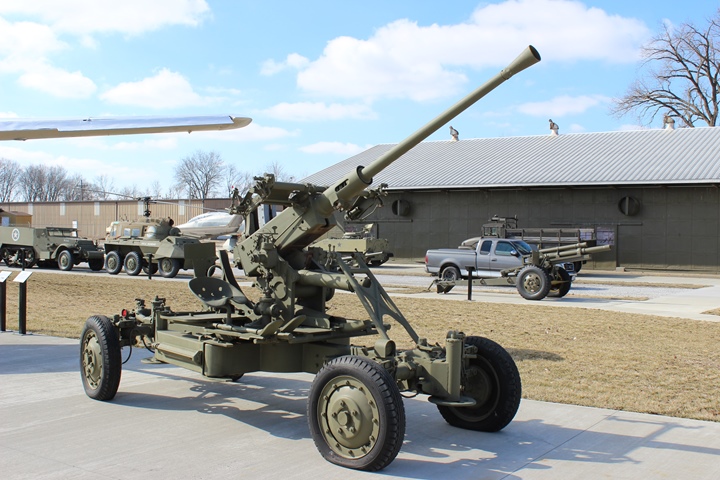
Chrysler also built 30,095 Single 40mm air cooled Bofors Guns for the U.S.
Army. This was 86% of all of the Bofors built for the U.S. Army.
As with the Bofors for the U.S. Navy, Chrysler only manufactured and
assembled the firing portion of the weapon. The carriages were
built by other companies. For the weapon shown here, Chrysler
shipped the finished barrel and breech assemblies to the Firestone Tire
and Rubber Company in Akron, OH. Firestone then mounted the gun
assembly on its carriages.
Post World War Two Era: The Home Avenue plant returned to
making civilian vehicle transmissions after World War Two and continued
to do so until 1955 when a new plant was built a mile
southeast of the Home Avenue plant for the production of the new
three-speed TorqueFlite automatic transmission. Home Avenue became
a die casting plant and operated until 1969 when a new casting plant was
built in Kokomo.
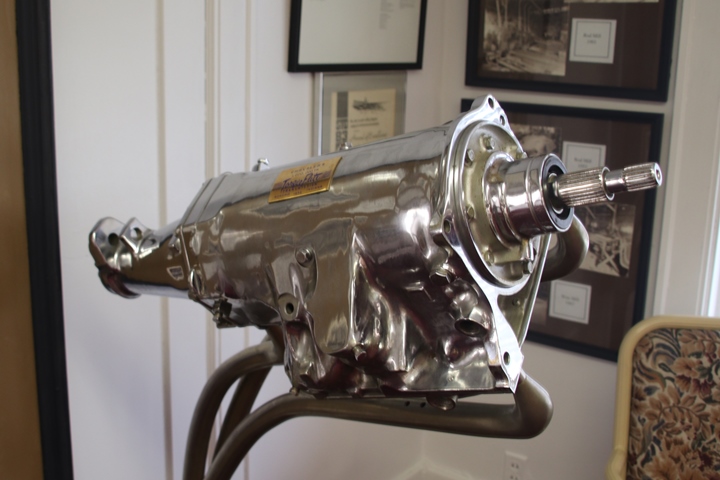
This chrome plated TorqueFlite transmission
is on display at the Elwood Haynes Museum in Kokomo, IN. Author's
photo.
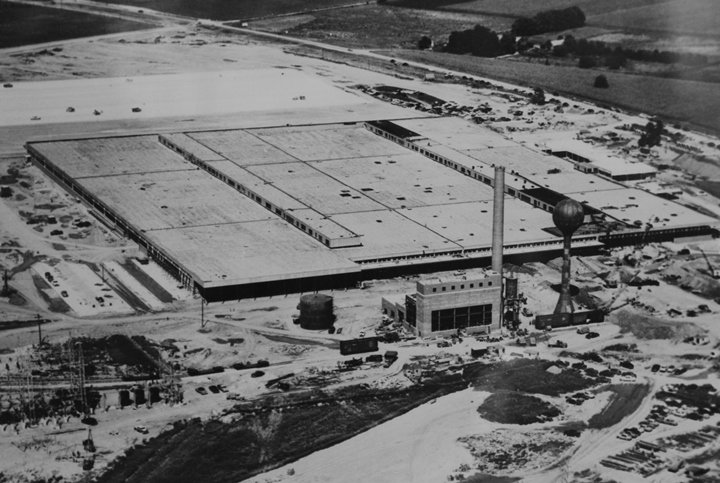
This image shows the new TorqueFlite
transmission plant under construction in 1945. Even before it was
completed, production of the transmission began. In the background
is the original U.S. 31 Kokomo by-pass. However, there were no
restrictions on access to the highway. Kokomo became known as the "stop
light city" for any travelers attempting to go north or south through
the city. The state highway department learned its lesson, so when
it put in a new U.S. 31 by-pass east of Kokomo, it came with limited
access. The field to the east of U.S. 31 in the photo later became
the main production area for Delco Electronics. Unlike the
transmission plant, the Delco Electronic facility is mostly vacant.
Author's photo from the Elwood Haynes Museum.
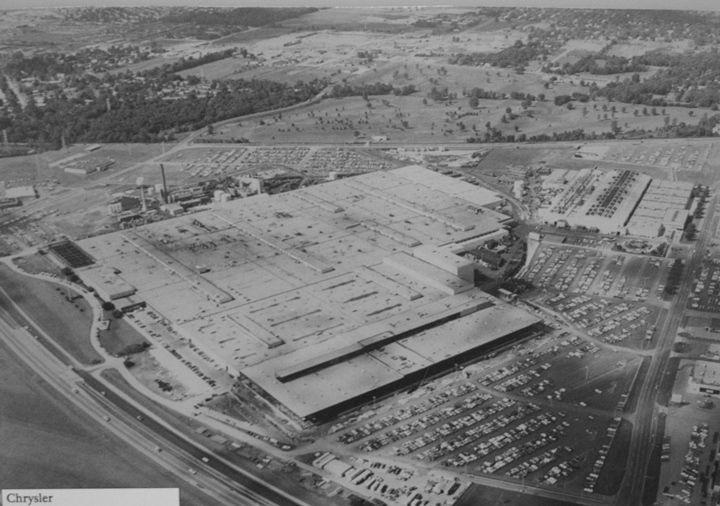
This image is looking southwest with the
original U.S. 31 by-pass in the foreground. The new casting plant that was built in 1969
is in the upper right.
|